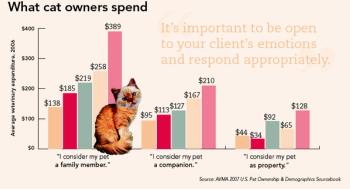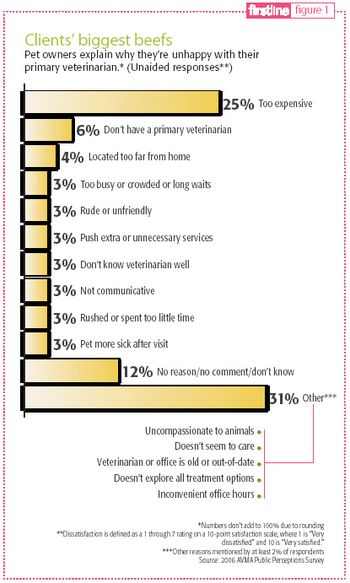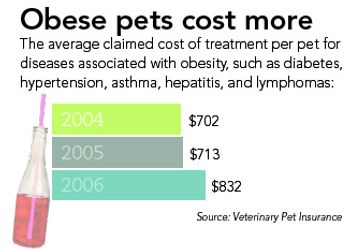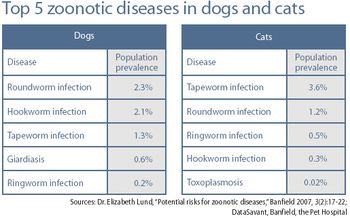
Use this tip to help clients put team members' faces to names.

Norco, Calif. -- A new microchip scanner capable of reading several brands and types of microchips used in pets and horses in the United States is now on the market.

We're sure by now many of you have mastered certain techniques aimed at attracting new clients into your offices.

Each day across the United States, we leave work late due to an overload of work, much of which is self-imposed.

The veterinary staff sees families at their moments of greatest worry concerning their companion animals.

Did you ever stop to think why clients come to your hospital?

Most veterinarians desire to do well while doing good. I have found that community outreach programs that simultaneously promote my practice help our team fulfill that desire.

Veterinarians have the unique position of experiencing their patients' deaths at a rate seven times that of human physicians, frequently leading them into unique shared emotional experiences with clients whom they have known for many years.

Here are the top 10 toughest parts of your job, in order, with advice for solving them from our Editorial Advisory Board.

Pet owner diversity calls for creative client service.

I think a lot of veterinarians see poor compliance because they ask clients to do things that are all but impossible. For example, say you're treating a dog that has a horrible ear infection, and you would need to manhandle the dog to get an ear drop in. And then you tell the client to give the dog three drops a day at home. The client can't do that.

More clients are complaining about their veterinary care because they expect more of you.

Pets still need care even when times are tight.

When it comes to veterinary spending, the issue isn't clients' income level but how pets fit into their lives.

We educate clients about pet insurance by putting fliers in puppy and kitten kits because it's too late to offer to help defray the cost of treatment once a chronic condition is diagnosed. We direct clients to the brochure or to a pet insurance company Web site.

You wish more of your clients had pet insurance, but do you know enough to help clients get the information they need?

Boarding and grooming can be a great opportunity.

Be wary of quick-fix marketing strategies. Even the most creative gimmicks often produce few or no results.

Here are 15 marketing tips that will yield results for your veterinary practice.

Different ethnic groups may share similar preferences, and learning them helps bond clients to your practice.

How to keep pet owners happy might seem like a mystery. But it's not. Learn the secrets to putting a smile on every client's face.

Capitalize on three things to increase visits by cat owners.

It's the elephant in the room. We all know pets are getting fatter, but just how fat? Until now, there was no concrete data.

Lakewood, Colo. - Associate veterinarians are jumping jobs faster than the average American worker, according to a new study, and salaries that don't keep pace with inflation could be partly to blame.

When clients face tough money choices, you'll need to be prepared to explain the care their pets need.

The use of green products is on the rise.

Keep these three things in mind to help stay complaint-free.

To reduce the risk for pets and people, the new thinking should be, "We're all in this together."

Cindy Adams, MSW, PhD, discusses techniques for excellent veterinary communication.

Client compliance does more than affect a pet's health-it directly affects your practice's bottom line. Are you doing all that you can to ensure clients follow your recommendations?